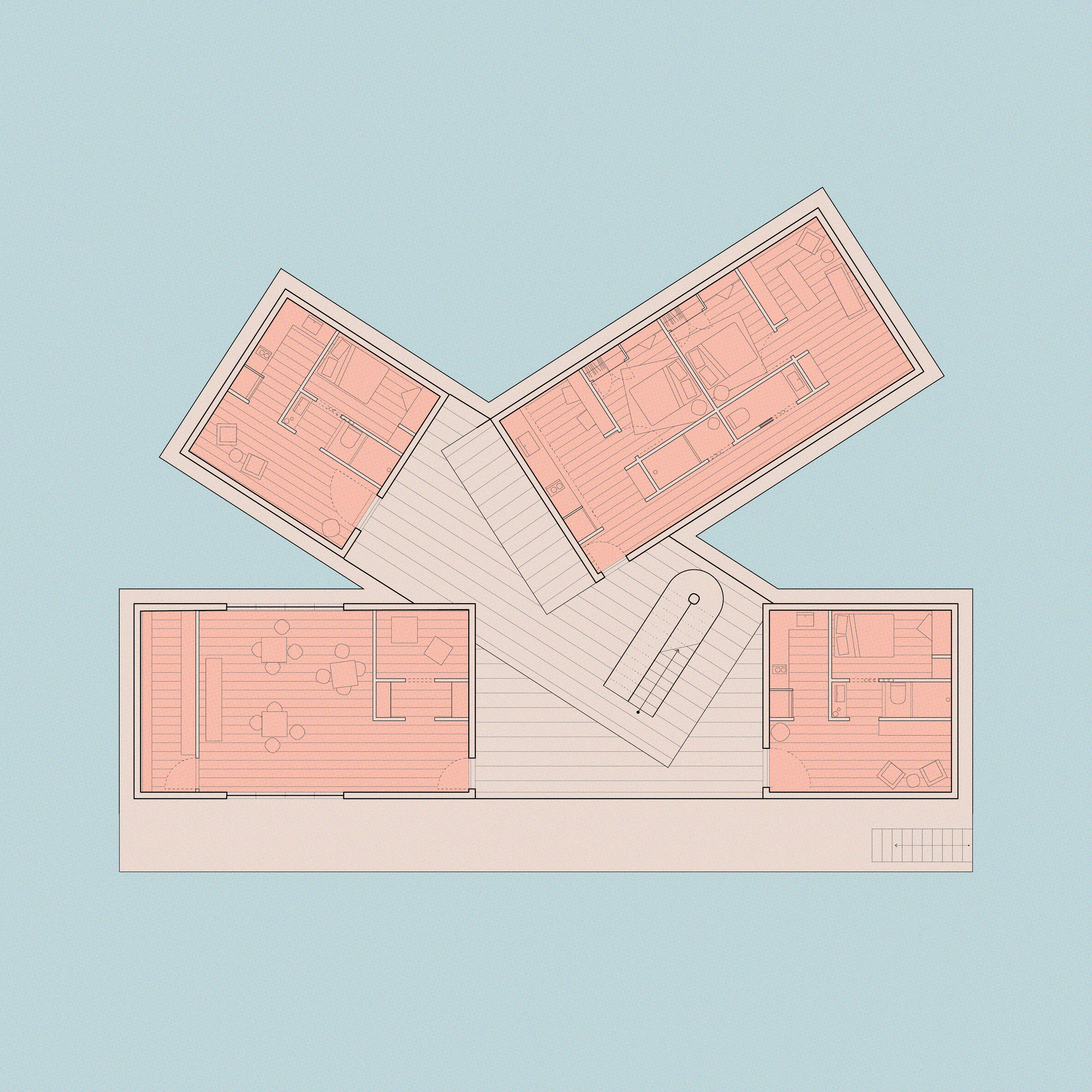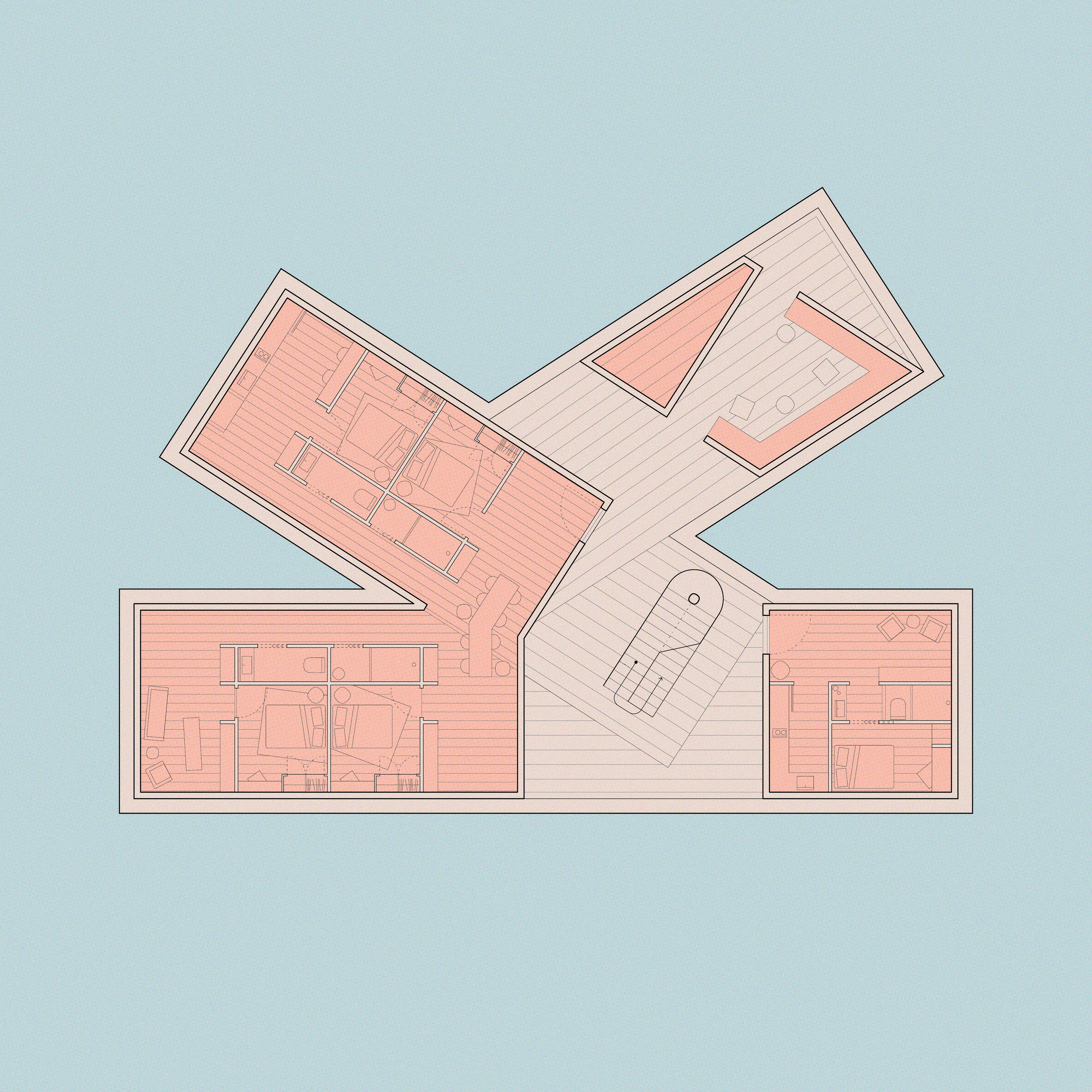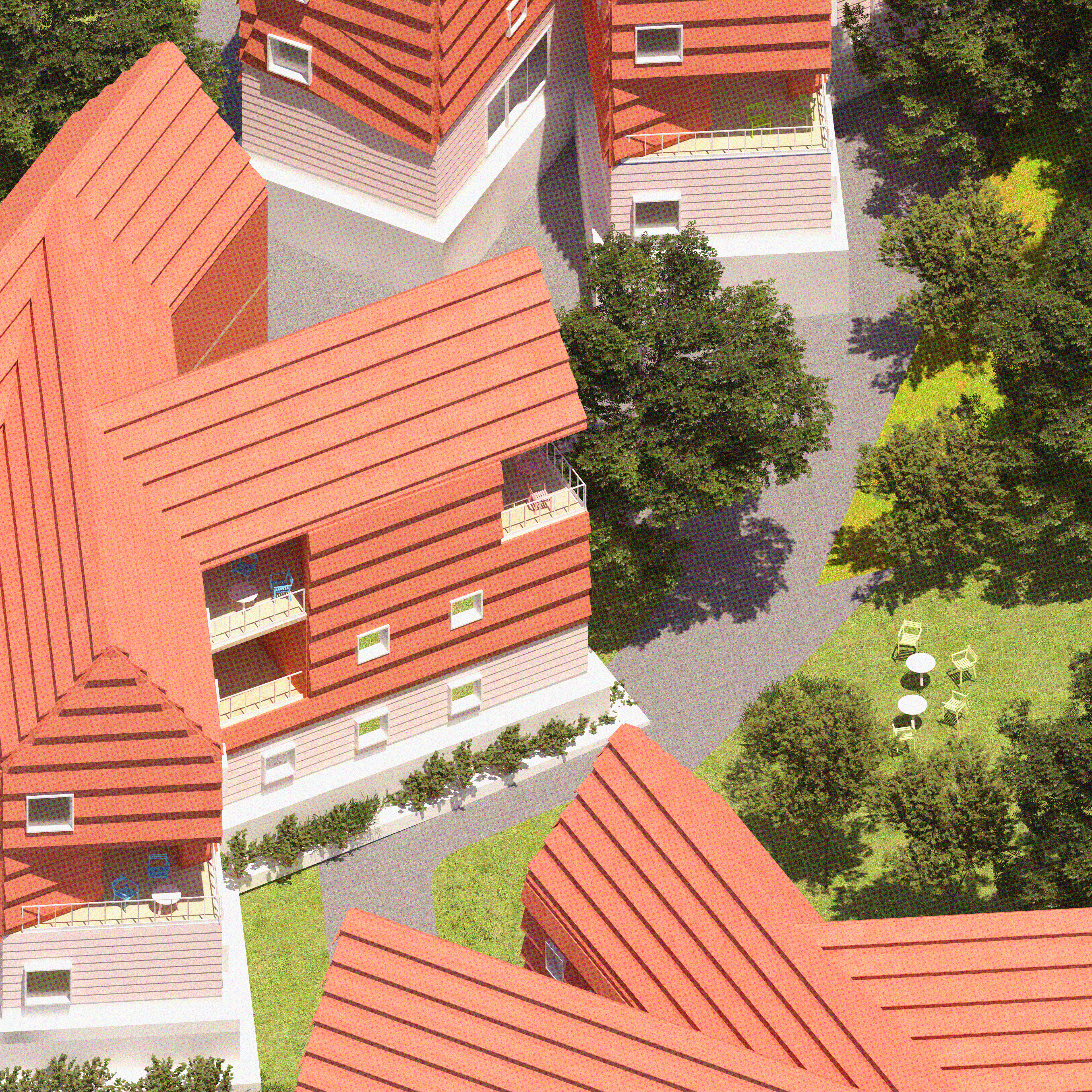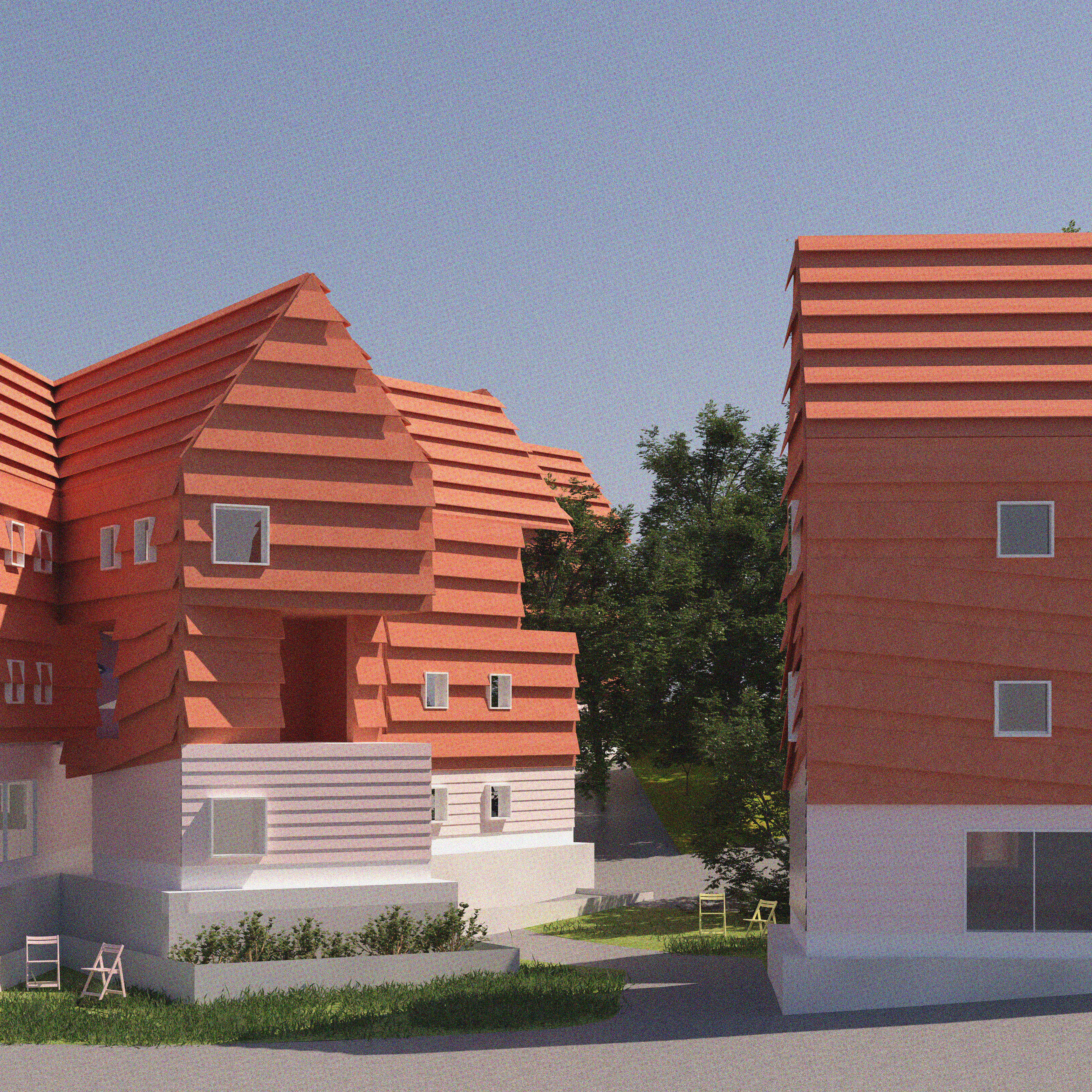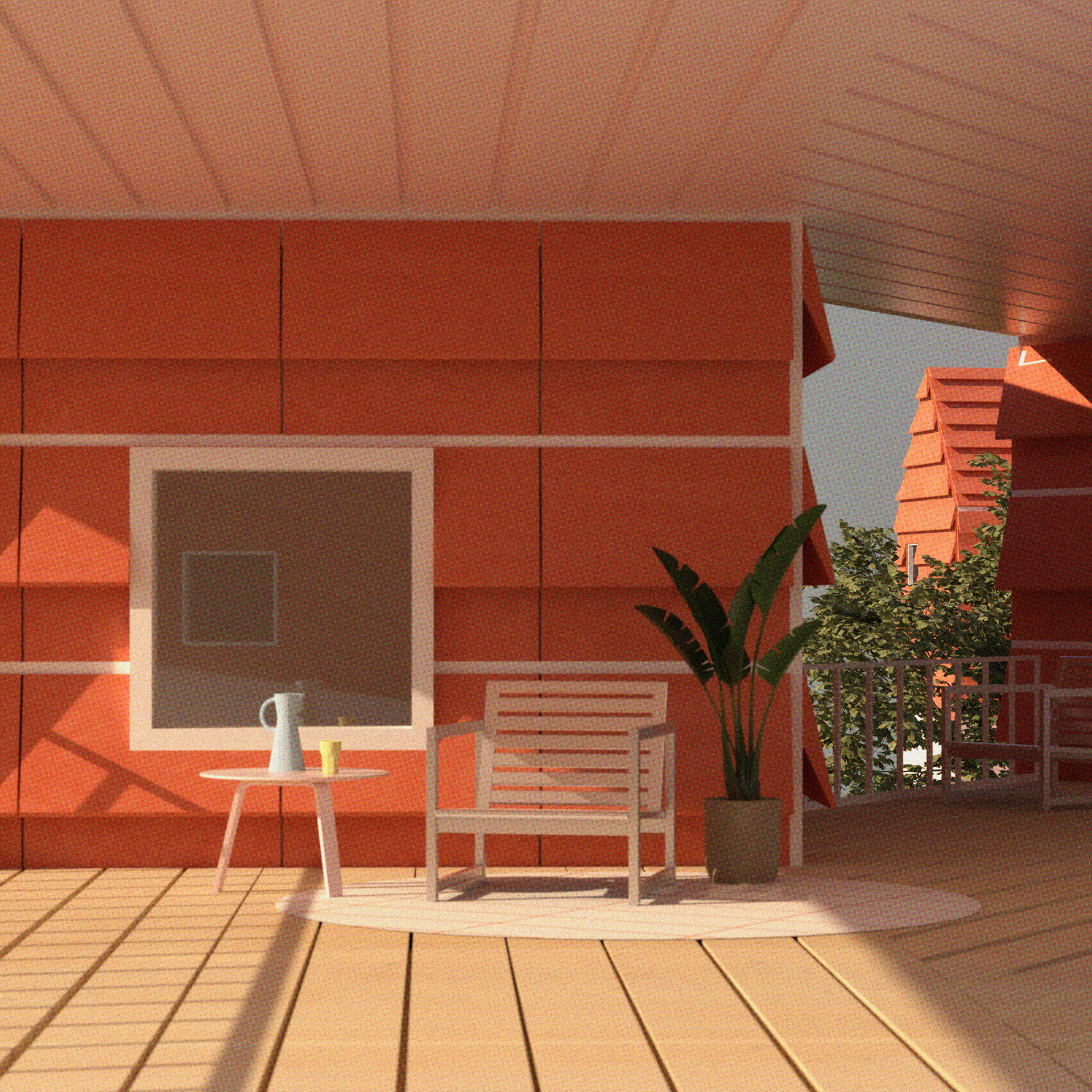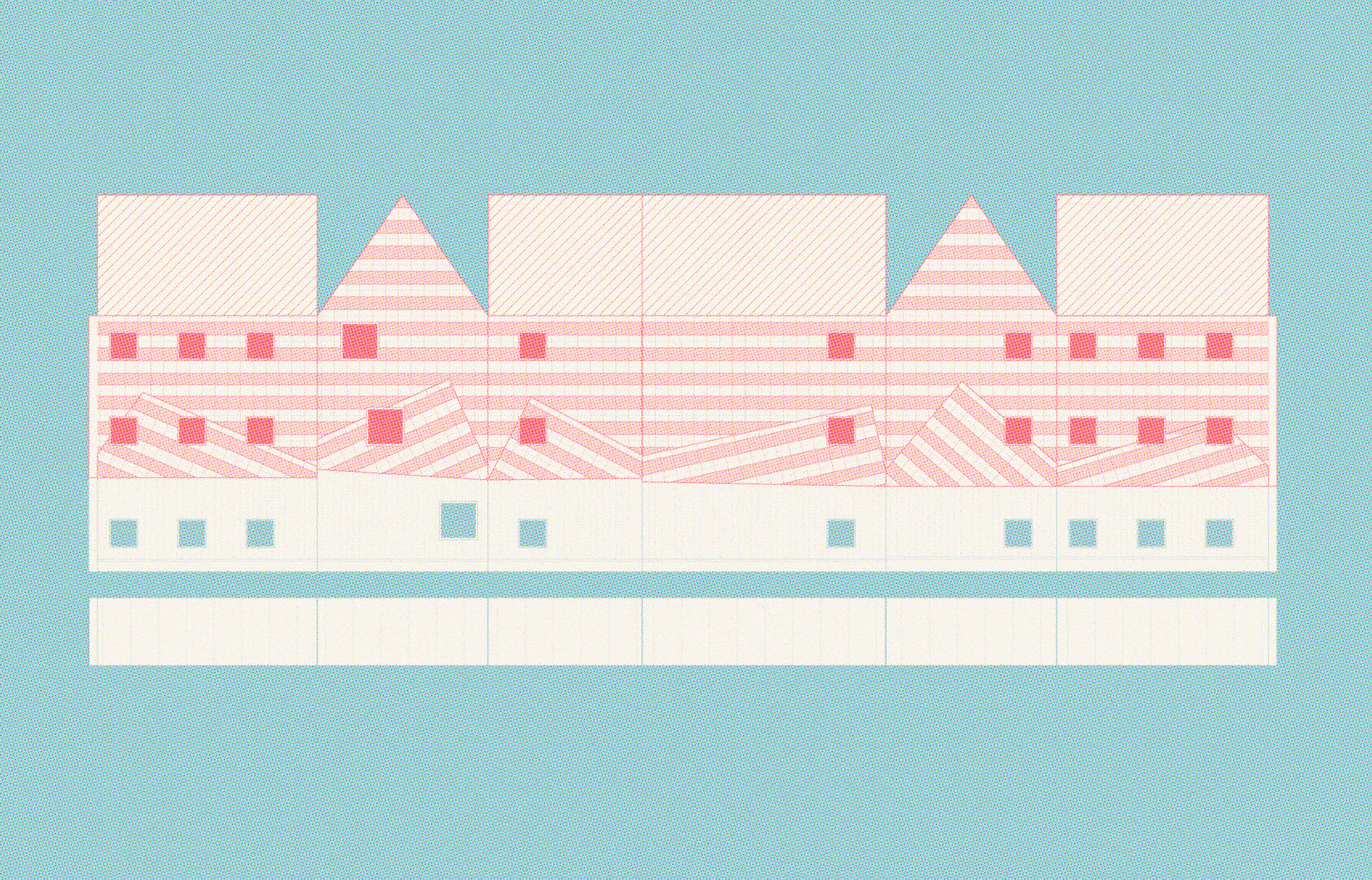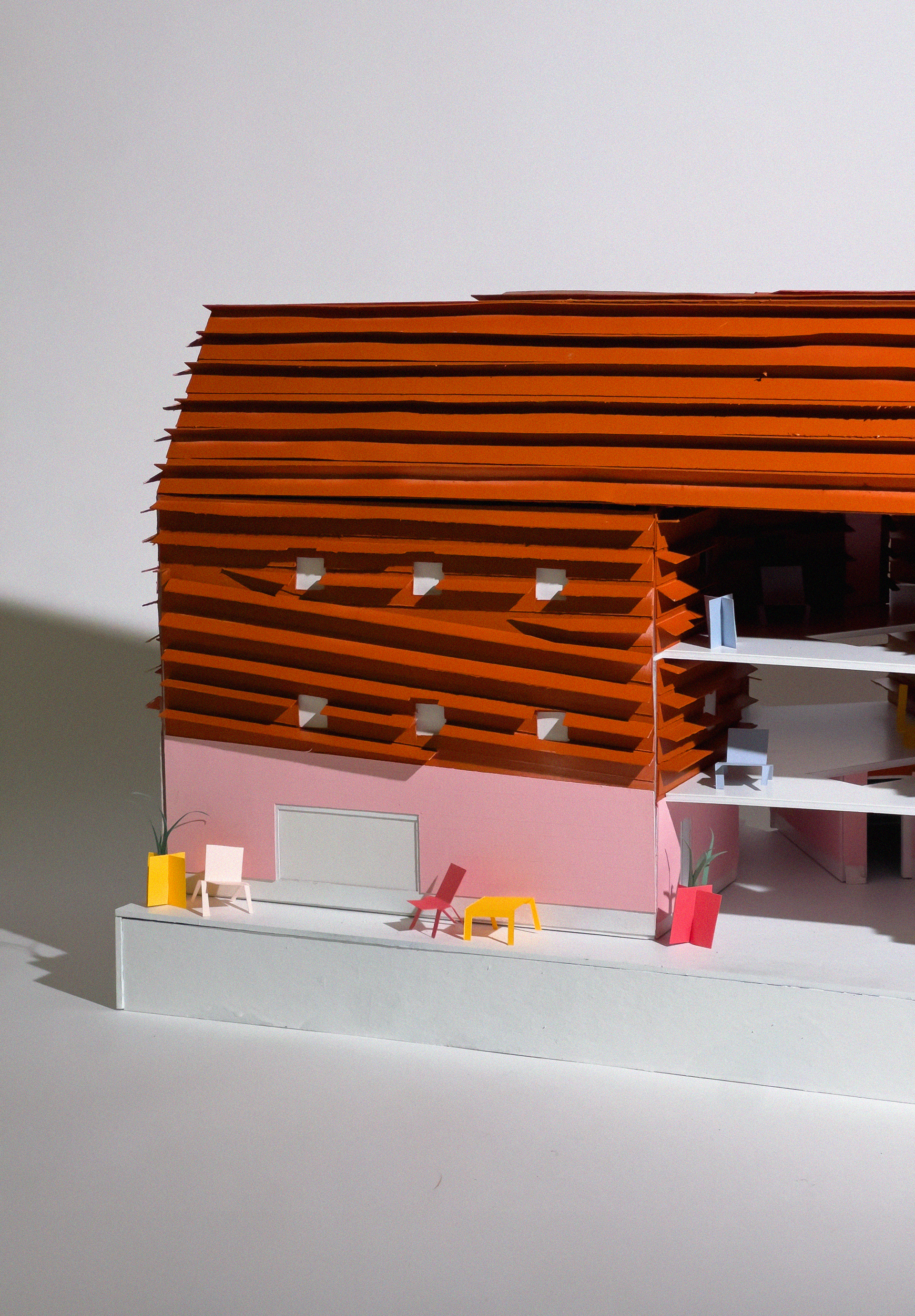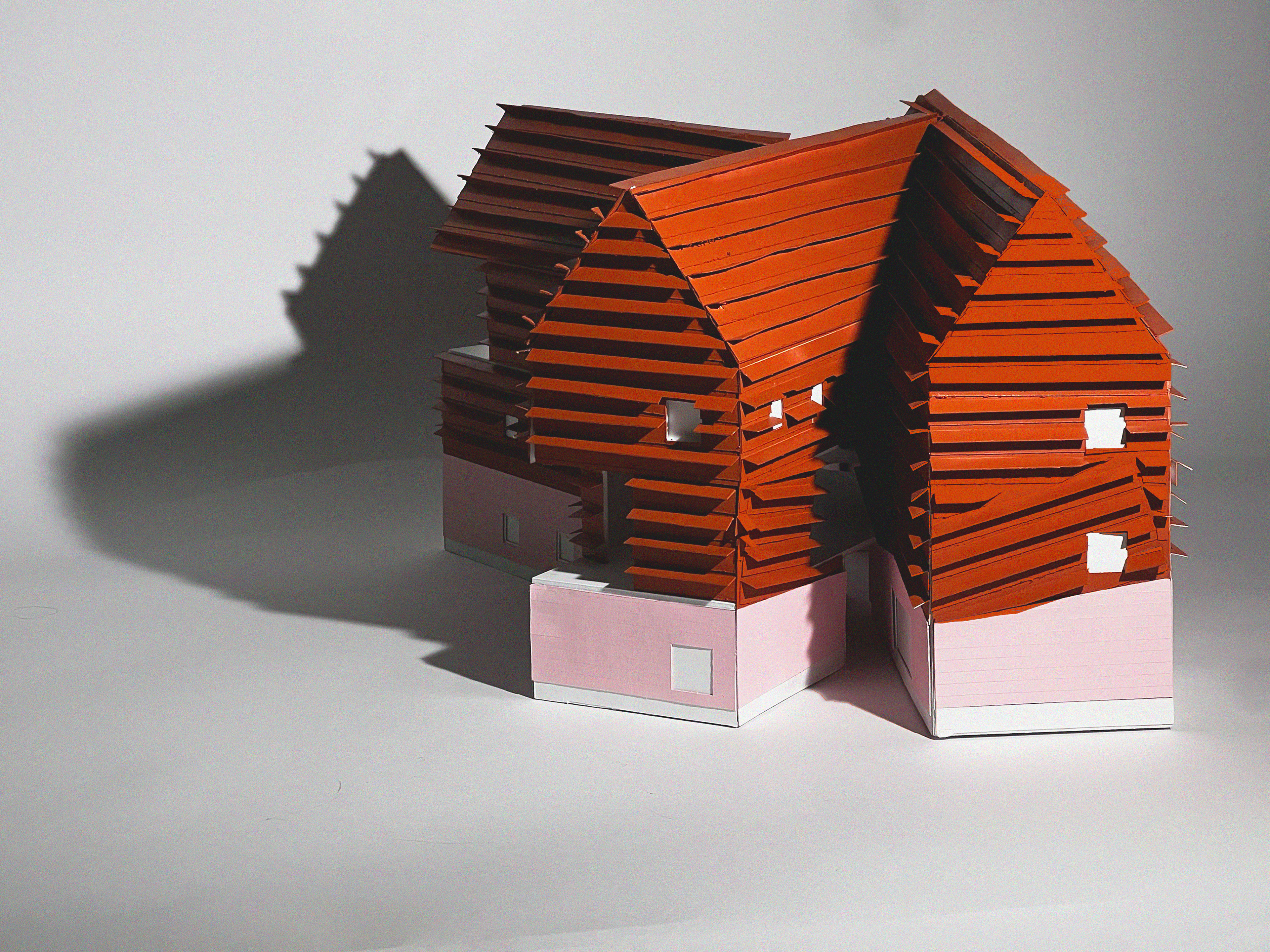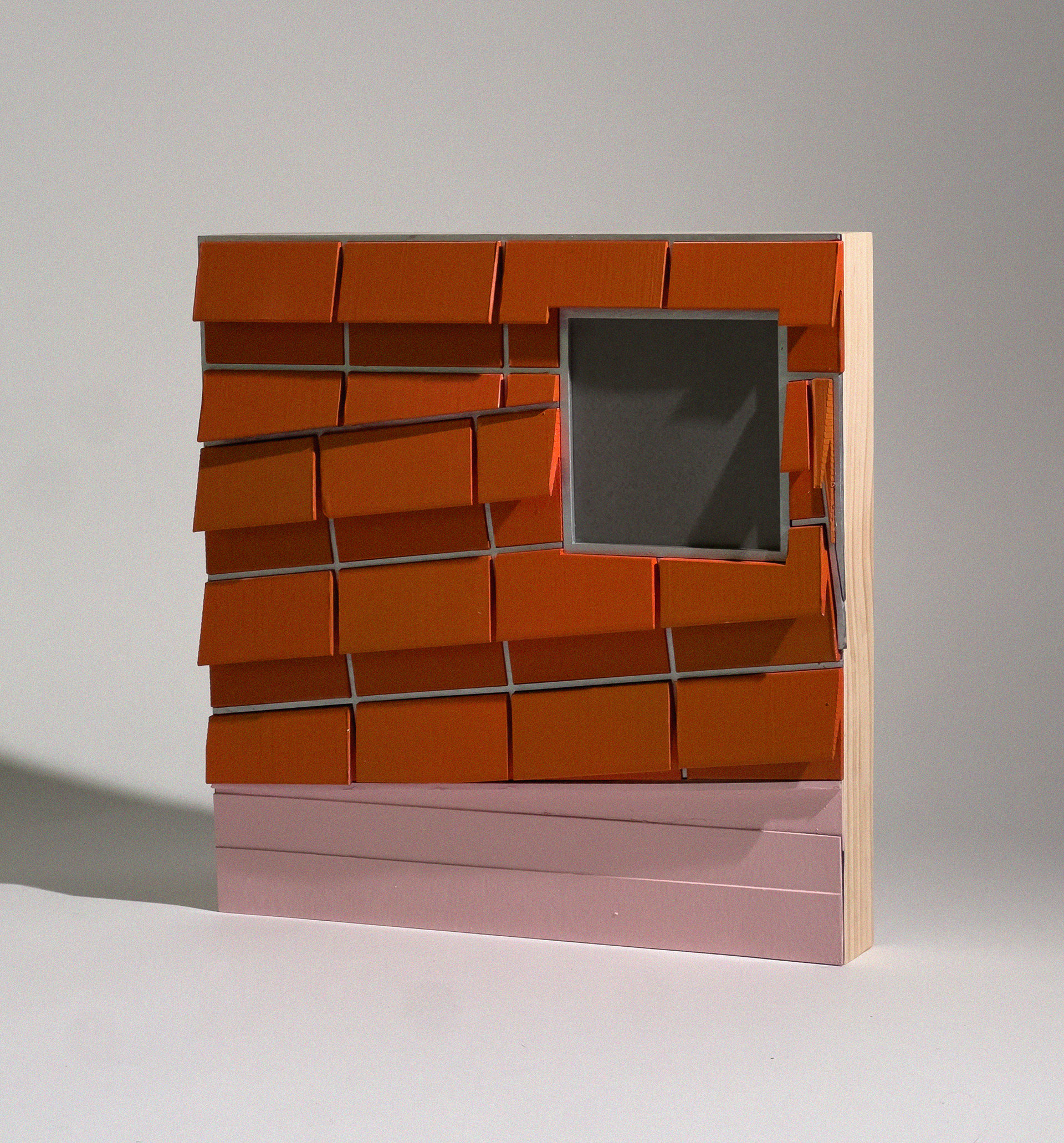House-Fold; Playing With the House
SPRING 2025 / STU1315 - Soft Slants, Mixed Gestures / Prof. Sean Canty
As it once stood, 770 Woolsey served as the home to a marigold nursery tucked away in the garden district of Portola. In a state of disrepair, the site now is a rare opportunity for large block development. In the interest of aiding in California's ongoing housing crisis, but Against the development of another uncharacteristic development,House-Fold reads the quilts of Rosie Lee Tompkins quilts as a starting point for spatial exploration, in hopes of finding alternative but familiar form. Inspired by not only the formal quality and heritage of Tompkins quilts, the project is also interested in challenging conventional domestic aesthetics through a queer and oppositional stance.
Manipulating the existing forms from the site, from a regular perimeter layout, the bars are transformed by the stitches found in Tompkins’ quilts, folding and mirroring the building to align with the off-centered and non-uniform seams between pieces. Recalling Sara Ahmed, “The hope of changing directions (...) risking departure from the straight and narrow, makes new futures possible,which may involve going astray, getting lost, or even becoming queer”, Rosie Lee Tompkins’ quilts serves as a framework to explore Ahmed’s readings of ‘queer space’,reorienting the bar alongside every stitch. With this move, residents are encouraged to trail along the odd angle, perhaps running into another resident similarly wandering through. In some instances, apartments tilt away from each other to open patio spaces, others will clash at irregular angles, reorienting the path as you turn the corner. By folding inwards, the bars bring dwellings into closer proximity to one another,
On the exterior, the facade reacts to the sloped site, mirroring topographical conditions as distortions to tile compositions. This folding and layering acts as a formal parallel to the tension between patchwork pieces as found in the work of Tompkins. The facade becomes a visualizer of the orientations between the sloping ground and the building, shifting to meet somewhere in between.
Imagining a new queer domestic identity, the project aims to patch a missing piece in Portola’s urban fabric, answering to underlying visual traditions and cultures not fully realized in built domestic spaces.
